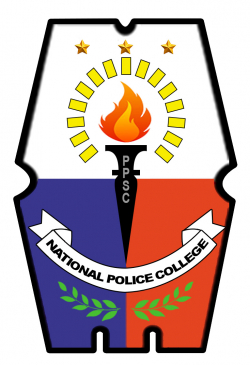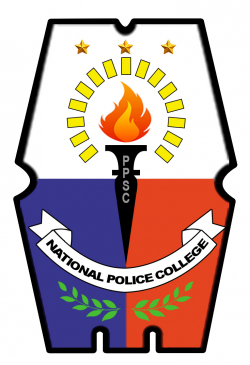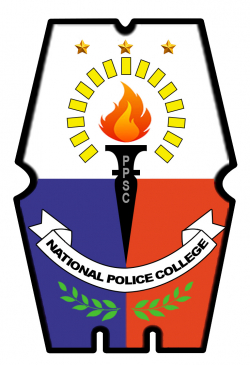POLICE SERVICES ADDRESSING VIOLENCE AGAINST WOMEN IN BAGUIO CITY: FRAMEWORK FOR A GENDER RESPONSIVE PROGRAM

Type
Thesis
Authors
LEAL ( JAIME RODRIGO )
Category
PSOSEC
[ Browse Items ]
Publication Year
2013
Publisher
PPSC - NPC, Philippines
Abstract
Violation against women is a violation of dignity, safety and human rights. The
problem is so immense that it has become a global issue of pandemic proportions. In
recent years, state efforts to curb and eradicate violence against women have
increased. Among the initiatives to strengthen the criminal justice system’s response to
VAW was the establishment of a women’s desk in the police force to provide protection
and assistance to victims.
In an effort to provide systematic information on the state of the Women and
Children Protection Desks as a specific intervention strategy for victims of gender-based
violence, the author conducted this study. Specifically, the study sought to assess the
current status, extent of the problems encountered and the proposed measures in the
provision of police services to address violence against women in Baguio City in terms
of personnel capability, investigation, operations and inter-agency coordination.
The descriptive method of research was utilized in the conduct of this study,
particularly the documentary review, key informant interviews, focus group discussions
and survey methods of gathering data. A stratified random sampling was employed in
the study to get the desired sample size of 220 respondents composed of 119 police
personnel, 57 barangay officials and 44 community respondents. Percentage
distribution, weighted mean and analysis of variance (ANOVA) were the statistical tools
used.
Results revealed that the current status in the provision of police services to
address violence against women obtained a verbal interpretation of “agree” from the
respondents in terms of personnel capability, investigation, operations and inter-agency
coordination. The respondents assessed the personnel capability as the weakest aspect
of the WCPD on account of the inadequate training and lack of competence of its
personnel in handling VAW cases. In contrast, investigation was considered as its
strongest point for providing complainant accurate and complete information about her
rights, legal options and services available to her, and for prioritizing victim safety,
comfort and protection during the investigation process.
With regards to the problems encountered, the study showed that the personnel
capability, investigation, operation and inter-agency coordination variables was rated as
“Moderately Serious” by the respondents. However, the following indicators were rated
as “Serious” by the respondents: the absence of a one-stop-shop crisis facility for
victim-survivors, police personnel handling VAW cases are not equipped with the
necessary training/skills, the WCPD lacks gender-responsive protocols and procedures
in the handling of VAW cases, there is no strict enforcement and regular monitoring of
the Protection Order and there is no close collaboration and regular networking with
other government agencies and NGOs.
On the proposed measures, similar adjectival ratings of “Highly recommended”
were observed in all variables. The following indicators obtained the highest average
weighted means: activate a “one-stop-shop” crisis center to reduce the number of
institutions that a survivor must visit to receive basic support; improve existing PNP
policies, protocols and procedures in the handling of VAW cases; ensure the strict
enforcement and regular monitoring of the Protection Order; and strengthen the referral
system through regular coordination with other government agencies and NGOs.
Based on interviews and focus group discussions with key informants, not all
WCPDs have been able to comply with the legal mandate on what services to render.
Except for investigation, rescue operation and filing of cases in court, the services vary
for every WCPD. Apparently, those who have better resources are able to provide more
services while others who barely have resources provide minimal services. The same is
true with facilities and equipment. The inadequacy or lack of resources was pointed out
by WCPD personnel as a barrier to fully carry out their mandated duties and
responsibilities. In sum, the interviews and FGDs revealed that much need to be done in
the effort to standardize services, protocols, facilities and personnel qualifications/skills
among WCPDs. Policies set by the PNP have yet to be put into full operation.
In the light of the findings of the study, the conclusions are as follows:
First, victim-survivors of intimate partner violence are confronted with the
following realities when they seek police intervention to stop the abuse: insufficient
training for police personnel who are in a position to identify abuse or respond to calls
for help; lack of competence in the conduct of initial interview and in-depth investigation;
non-compliance with the mandate to strictly enforce and regularly monitor the Protection
Order; and the lack of effective community collaboration which placed the burden of
attempting to access and coordinate services on victims and their families.
Second, the provision of police services for victim-survivors was beset with
moderately serious to serious problems, such as the absence of a police-based “one-
stop-shop” crisis facility to meet the multiple needs of victim-survivors; lack of gender-
responsive protocols and procedures in the handling of VAW cases; failure of WCPD
personnel to enforce and monitor the Protection Order; and the lack of coordinated
community responses.
Third, the Philippine National Police needs to review, evaluate and revise its
policies, protocols, standard operating procedures and guidelines in the handling of
VAW cases in order to ensure that police personnel assigned to the Women and
Children Protection Desk are competent, responsive and sensitive to the needs of the
victims.
In the light of the findings and conclusions of the study, several
recommendations are made as a result of the research: (a) capacity building, skills
enhancement and gender sensitivity training of WPCD personnel; (b) activate a one-
stop-shop crisis facility for victim-survivors of violence against women; (c) formulate a
policy establishing guidelines for PNP personnel responding to domestic violence calls;
(d) review, revise and update the manual on the investigation of crimes involving
women and children; (e) establish, implement and monitor an integrated referral system
to address the needs of victims-survivors; (f) adopt the formulated action plan on gender
responsive police interventions to address violence against women; and (g) more in-
depth studies on law enforcement response to violence against women.
problem is so immense that it has become a global issue of pandemic proportions. In
recent years, state efforts to curb and eradicate violence against women have
increased. Among the initiatives to strengthen the criminal justice system’s response to
VAW was the establishment of a women’s desk in the police force to provide protection
and assistance to victims.
In an effort to provide systematic information on the state of the Women and
Children Protection Desks as a specific intervention strategy for victims of gender-based
violence, the author conducted this study. Specifically, the study sought to assess the
current status, extent of the problems encountered and the proposed measures in the
provision of police services to address violence against women in Baguio City in terms
of personnel capability, investigation, operations and inter-agency coordination.
The descriptive method of research was utilized in the conduct of this study,
particularly the documentary review, key informant interviews, focus group discussions
and survey methods of gathering data. A stratified random sampling was employed in
the study to get the desired sample size of 220 respondents composed of 119 police
personnel, 57 barangay officials and 44 community respondents. Percentage
distribution, weighted mean and analysis of variance (ANOVA) were the statistical tools
used.
Results revealed that the current status in the provision of police services to
address violence against women obtained a verbal interpretation of “agree” from the
respondents in terms of personnel capability, investigation, operations and inter-agency
coordination. The respondents assessed the personnel capability as the weakest aspect
of the WCPD on account of the inadequate training and lack of competence of its
personnel in handling VAW cases. In contrast, investigation was considered as its
strongest point for providing complainant accurate and complete information about her
rights, legal options and services available to her, and for prioritizing victim safety,
comfort and protection during the investigation process.
With regards to the problems encountered, the study showed that the personnel
capability, investigation, operation and inter-agency coordination variables was rated as
“Moderately Serious” by the respondents. However, the following indicators were rated
as “Serious” by the respondents: the absence of a one-stop-shop crisis facility for
victim-survivors, police personnel handling VAW cases are not equipped with the
necessary training/skills, the WCPD lacks gender-responsive protocols and procedures
in the handling of VAW cases, there is no strict enforcement and regular monitoring of
the Protection Order and there is no close collaboration and regular networking with
other government agencies and NGOs.
On the proposed measures, similar adjectival ratings of “Highly recommended”
were observed in all variables. The following indicators obtained the highest average
weighted means: activate a “one-stop-shop” crisis center to reduce the number of
institutions that a survivor must visit to receive basic support; improve existing PNP
policies, protocols and procedures in the handling of VAW cases; ensure the strict
enforcement and regular monitoring of the Protection Order; and strengthen the referral
system through regular coordination with other government agencies and NGOs.
Based on interviews and focus group discussions with key informants, not all
WCPDs have been able to comply with the legal mandate on what services to render.
Except for investigation, rescue operation and filing of cases in court, the services vary
for every WCPD. Apparently, those who have better resources are able to provide more
services while others who barely have resources provide minimal services. The same is
true with facilities and equipment. The inadequacy or lack of resources was pointed out
by WCPD personnel as a barrier to fully carry out their mandated duties and
responsibilities. In sum, the interviews and FGDs revealed that much need to be done in
the effort to standardize services, protocols, facilities and personnel qualifications/skills
among WCPDs. Policies set by the PNP have yet to be put into full operation.
In the light of the findings of the study, the conclusions are as follows:
First, victim-survivors of intimate partner violence are confronted with the
following realities when they seek police intervention to stop the abuse: insufficient
training for police personnel who are in a position to identify abuse or respond to calls
for help; lack of competence in the conduct of initial interview and in-depth investigation;
non-compliance with the mandate to strictly enforce and regularly monitor the Protection
Order; and the lack of effective community collaboration which placed the burden of
attempting to access and coordinate services on victims and their families.
Second, the provision of police services for victim-survivors was beset with
moderately serious to serious problems, such as the absence of a police-based “one-
stop-shop” crisis facility to meet the multiple needs of victim-survivors; lack of gender-
responsive protocols and procedures in the handling of VAW cases; failure of WCPD
personnel to enforce and monitor the Protection Order; and the lack of coordinated
community responses.
Third, the Philippine National Police needs to review, evaluate and revise its
policies, protocols, standard operating procedures and guidelines in the handling of
VAW cases in order to ensure that police personnel assigned to the Women and
Children Protection Desk are competent, responsive and sensitive to the needs of the
victims.
In the light of the findings and conclusions of the study, several
recommendations are made as a result of the research: (a) capacity building, skills
enhancement and gender sensitivity training of WPCD personnel; (b) activate a one-
stop-shop crisis facility for victim-survivors of violence against women; (c) formulate a
policy establishing guidelines for PNP personnel responding to domestic violence calls;
(d) review, revise and update the manual on the investigation of crimes involving
women and children; (e) establish, implement and monitor an integrated referral system
to address the needs of victims-survivors; (f) adopt the formulated action plan on gender
responsive police interventions to address violence against women; and (g) more in-
depth studies on law enforcement response to violence against women.
Number of Copies
1
| Library | Accession No | Call No | Copy No | Edition | Location | Availability |
|---|---|---|---|---|---|---|
| NPC Library | 676077 | 1 | Yes |



